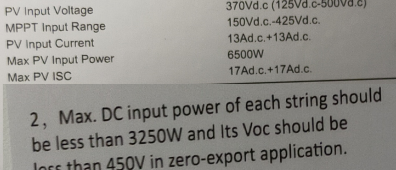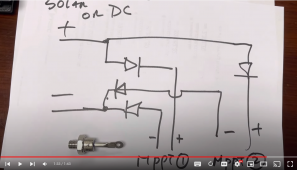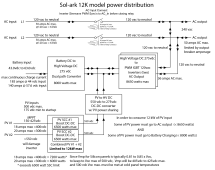burgerking
New Member
I understand how MPPT works; it tracks input V vs input I and come out with the best V*I for optimum Power.
Here is my question:
Assume my Deye Inverter has dual MPPT ports, each port has Vmp 450V, Imp 13A.

Assume I have two identical PV strings. And I had observed that at max power, Voc~ 270V, Vmp ~210V, Imp ~8A for each string.
Now, If I combine these two strings, will the combined Vmp ~ 210V, Imp ~16A?
or since each MPPT can only handle 13A, will the MPPT adjust for higher Vmp and lower Imp?
I have so many times about panel oversizing, but how exactly will it work?
As you can see, this two strings has Pmax of just ~3400W and barely above Deye's PVmax of 3250W.
But obviously Deye's MPPT cannot handle 16A...
Should I instead redo this combined string into a series, and remove a few panels to reduce the Vmax?
Here is my question:
Assume my Deye Inverter has dual MPPT ports, each port has Vmp 450V, Imp 13A.

Assume I have two identical PV strings. And I had observed that at max power, Voc~ 270V, Vmp ~210V, Imp ~8A for each string.
Now, If I combine these two strings, will the combined Vmp ~ 210V, Imp ~16A?
or since each MPPT can only handle 13A, will the MPPT adjust for higher Vmp and lower Imp?
I have so many times about panel oversizing, but how exactly will it work?
As you can see, this two strings has Pmax of just ~3400W and barely above Deye's PVmax of 3250W.
But obviously Deye's MPPT cannot handle 16A...
Should I instead redo this combined string into a series, and remove a few panels to reduce the Vmax?
Last edited:





